
rheem electric tankless water heater manual
Welcome to the Rheem Electric Tankless Water Heater Manual, your comprehensive guide to installation, operation, and maintenance. Optimize performance, ensure safety, and enjoy endless hot water efficiently.
Overview of Rheem Electric Tankless Water Heater
The Rheem Electric Tankless Water Heater is a modern, energy-efficient solution designed for residential use. It provides continuous hot water on demand, eliminating the need for a storage tank. Available in 18kW and 27kW models, it suits various household sizes and needs. Compact and wall-mountable, it saves space while delivering reliable performance. With advanced temperature controls, it ensures consistent water temperature and energy savings. Ideal for eco-conscious homeowners, it offers a durable and low-maintenance alternative to traditional water heaters.
Importance of the Manual for Installation and Maintenance
This manual is essential for proper installation, operation, and maintenance of your Rheem Electric Tankless Water Heater. It provides detailed guidelines to ensure safety, efficiency, and optimal performance. By following the instructions, you can avoid potential risks such as electrical shock or system damage. The manual also includes troubleshooting tips and maintenance schedules to keep your heater running smoothly. Refer to it regularly to maximize energy savings, extend the unit’s lifespan, and maintain reliable hot water supply for your home.
Key Features of Rheem Electric Tankless Water Heater
Rheem Electric Tankless Water Heaters offer 18kW and 27kW power options, compact designs, energy efficiency, and advanced temperature controls, making them ideal for modern, eco-friendly homes.
Power Options: 18kW and 27kW Models
Rheem Electric Tankless Water Heaters are available in 18kW and 27kW models, catering to different household needs. The 18kW model is ideal for small to medium-sized homes, while the 27kW model provides higher capacity for larger families or homes with greater hot water demands. Both models are designed to deliver consistent performance and energy efficiency. The 27kW model requires a 30-amp circuit, ensuring sufficient power for optimal operation. These power options allow users to choose the right heater for their lifestyle, ensuring reliable and efficient hot water supply year-round.
Compact Design and Space-Saving Benefits
Rheem Electric Tankless Water Heaters boast a sleek, compact design that saves valuable space in your home. Unlike traditional tank-style heaters, these units are wall-mounted and lightweight, freeing up floor space for other uses. Their slim profile ensures they blend seamlessly into any room, enhancing your home’s aesthetic appeal. The compact design also makes installation easier, as they can be mounted in small areas like utility rooms or even outdoors. This space-saving feature is ideal for modern homes seeking efficiency and versatility without compromising on performance or style.
Energy Efficiency and Eco-Friendliness
Rheem Electric Tankless Water Heaters are designed with energy efficiency in mind, offering an eco-friendly alternative to traditional tank-style heaters. These units only consume energy when hot water is needed, reducing standby heat loss and lowering utility bills. By heating water on demand, they minimize energy waste, making them a sustainable choice for environmentally conscious homeowners. Additionally, their compact design and advanced technology ensure optimal performance while using less energy, contributing to a greener and more energy-efficient home environment. This eco-friendly approach aligns with modern conservation efforts, providing both cost savings and environmental benefits.
Advanced Temperature Control and Settings
Rheem Electric Tankless Water Heaters feature advanced temperature control systems, allowing precise adjustment for consistent comfort. Users can set desired temperatures digitally, ensuring optimal water heat for various needs. These models often include smart sensors that monitor and maintain temperature stability, preventing scalding or sudden drops. Enhanced settings may also offer multiple operating modes, such as eco-mode for energy savings or high-demand mode for heavy usage. This level of control provides flexibility, efficiency, and safety, catering to different household preferences and requirements with ease and reliability.
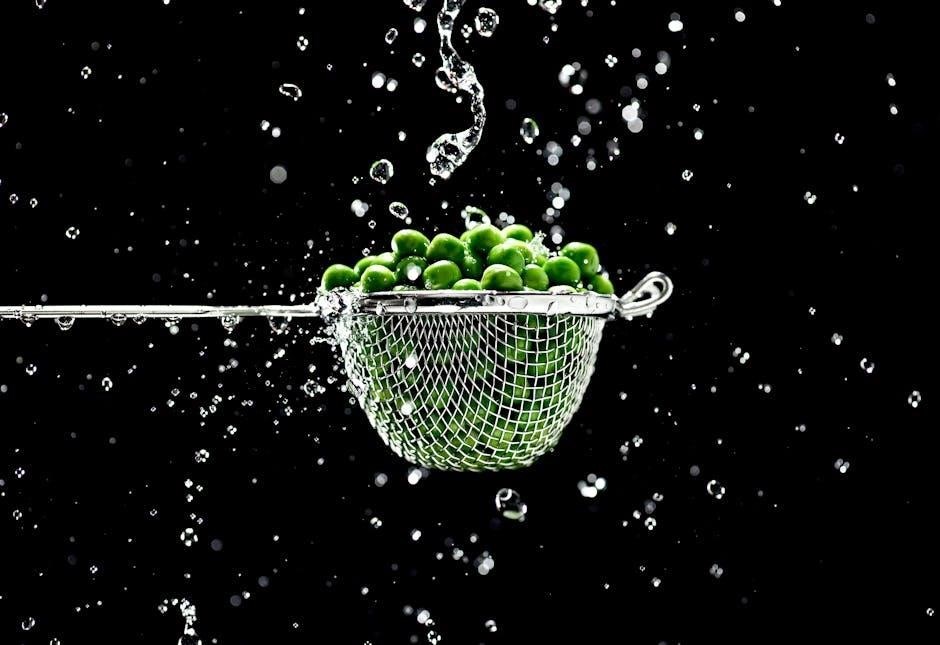
Installation Requirements and Guidelines
Ensure a 30-amp circuit, proper wiring, and compatible plumbing connections. Follow ventilation and airflow recommendations for safe and efficient installation of your Rheem Electric Tankless Water Heater.
Electrical Requirements: 30-Amp Circuit and Wiring
A dedicated 30-amp circuit is essential for the Rheem Electric Tankless Water Heater to ensure safe and efficient operation. The wiring must be appropriately sized to handle the high power demand, typically requiring a 10-gauge wire. Ensure the circuit is properly grounded and protected by a suitable breaker. It’s crucial to verify that the electrical system in your home can support the heater’s power requirements, especially for the 27kW model. Always consult a licensed electrician to ensure compliance with local electrical codes and safety standards. Proper installation prevents overheating and electrical hazards.
Plumbing Considerations: Water Supply and Connections
Ensure the Rheem Electric Tankless Water Heater is connected to a cold water supply line, as it does not store hot water. The unit requires proper sizing of water supply lines to maintain optimal flow rate and pressure. Install a shut-off valve near the heater for easy maintenance. Check local plumbing codes for specific requirements, such as water pressure limits and drain line connections. Regularly inspect for leaks and scale buildup, which can affect performance. Proper plumbing ensures efficient operation and prevents damage to the unit.
Ventilation and Airflow Recommendations
Proper ventilation and airflow are crucial for the Rheem Electric Tankless Water Heater to function efficiently. Ensure the unit is installed in a well-ventilated area to prevent moisture buildup. Maintain at least 12 inches of clearance around the heater for optimal airflow. Avoid installing in enclosed spaces without proper ventilation, as this can lead to humidity issues; Regularly inspect the surrounding area for dust or debris that may obstruct airflow. Ensure all vents and air intake grilles are unobstructed to maintain performance and safety.
Safety Precautions and Warnings
Always follow safety guidelines to prevent accidents. Avoid electrical shock by keeping the area dry and ensuring proper installation. Adhere to ventilation and shutdown procedures for emergencies.
Electrical Shock Prevention Measures
To prevent electrical shock, ensure the power supply is turned off before any maintenance or repair. Always keep the area around the heater dry and avoid touching electrical components with wet hands. Use a grounded power supply and follow all wiring instructions carefully. Never attempt repairs without proper training, and ensure all connections are secure. Regularly inspect the unit for signs of wear or damage. Proper installation by a licensed professional is essential to minimize risks and ensure safe operation.
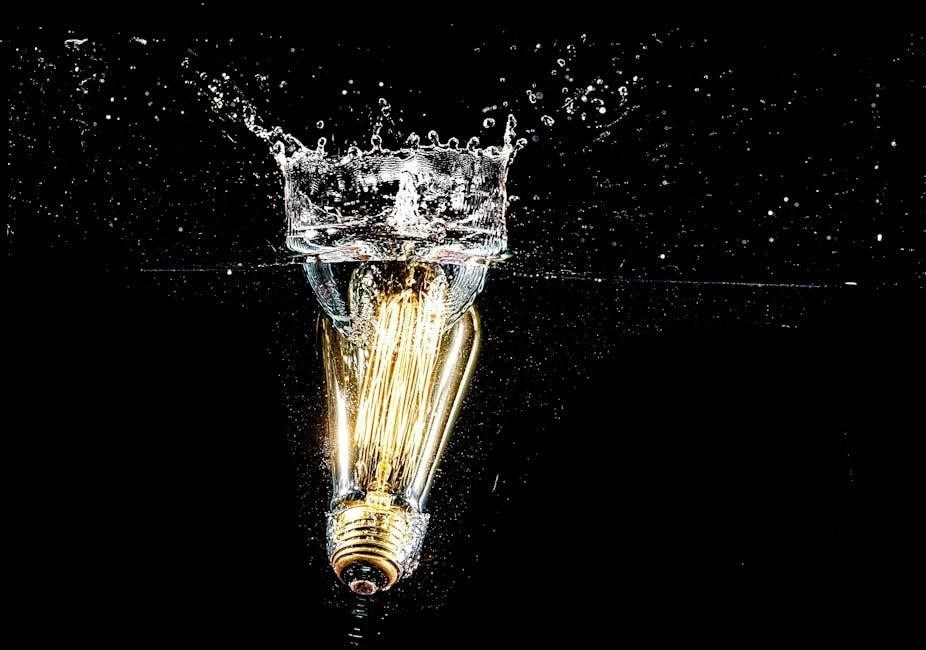
Proper Ventilation to Avoid Gas Buildup
Ensure proper ventilation to avoid gas buildup, even with electric models. Install the heater in a well-ventilated area to prevent moisture accumulation. Keep the surrounding space clear of obstructions. Regularly inspect vents and airflow paths for damage or blockages. Proper ventilation enhances efficiency, reduces humidity, and prevents potential safety hazards. Always follow the manufacturer’s guidelines for airflow requirements to maintain optimal performance and safety standards.
Emergency Shutdown Procedures
In case of an emergency, immediately shut off the power supply to the heater at the circuit breaker. Locate the water shut-off valves and turn them clockwise to stop water flow; Open nearby windows for ventilation if gas is suspected. Do not attempt repairs yourself. Consult the manual or contact a certified technician for assistance. Always prioritize safety to prevent accidents or further issues. Regular checks can help avoid emergencies, ensuring reliable operation and longevity of your Rheem Electric Tankless Water Heater.
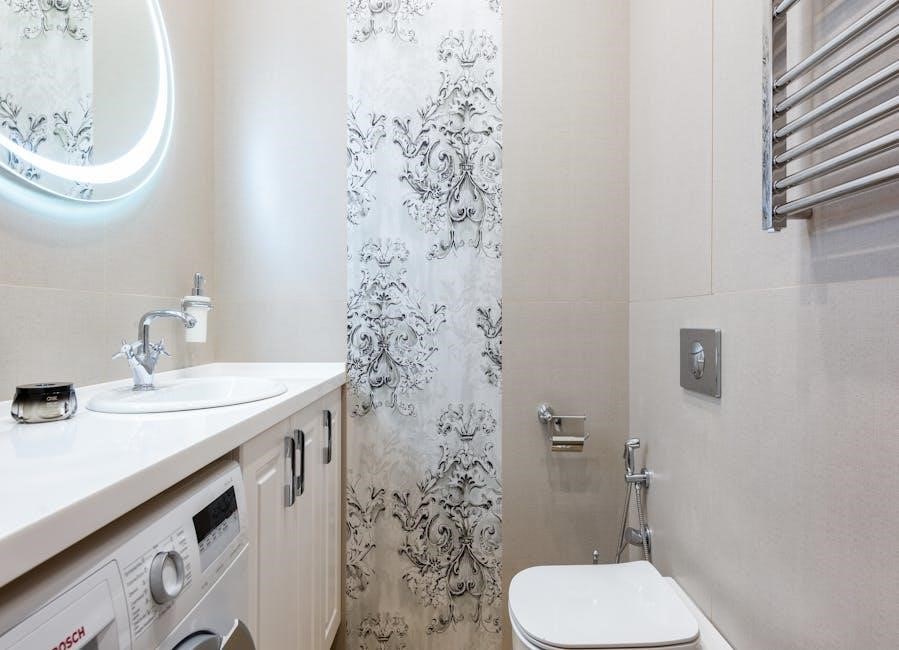
Operating Instructions
Turn on the hot water tap to activate the heater. Adjust temperature via the control panel. Monitor flow rate for optimal performance. Follow manual guidelines for settings.
How the Heater Activates When Hot Water Tap is Opened
When the hot water tap is opened, the Rheem Electric Tankless Water Heater activates automatically. Flow sensors detect water movement, triggering the heating elements to energize. The system instantly heats the water as it flows through, providing a continuous supply of hot water. This on-demand activation ensures energy efficiency and instantaneous response, delivering hot water only when needed without preheating or storing water. The process is seamless and designed for optimal performance and convenience.
Temperature Adjustment and Settings
The Rheem Electric Tankless Water Heater allows precise temperature control, typically ranging from 80°F to 140°F. Users can adjust settings via a digital interface or temperature control knob, ensuring optimal water temperature for various needs. The system may offer multiple operating modes, such as eco-mode or high-demand settings, to customize performance. Refer to the manual for specific instructions on adjusting temperatures and selecting modes to ensure safe and efficient operation. Proper settings enhance comfort and energy efficiency, catering to household preferences and requirements.
Understanding Flow Rate and Temperature Output
The Rheem Electric Tankless Water Heater delivers hot water based on flow rate and temperature settings. Flow rate, measured in gallons per minute (GPM), determines how much water is heated at once. Higher flow rates may require lower temperature settings to maintain consistent output. The heater automatically adjusts its heating element to match demand, ensuring efficient energy use. Temperature output is regulated by internal controls, with typical ranges between 80°F and 140°F. Understanding these dynamics helps optimize performance, prevent overheating, and ensure safe operation. Always refer to the manual for specific model recommendations.
Maintenance Tips
Regular maintenance ensures optimal performance and longevity. Clean filters, inspect for leaks, and descale to remove mineral buildup, following the manual’s specific guidelines for your Rheem model.
Filter Cleaning and Replacement
Regular filter cleaning and replacement are essential for maintaining your Rheem electric tankless water heater’s efficiency. Clean the filter every 3–6 months by turning off power, removing it, and rinsing with water. If damaged, replace it immediately to prevent reduced performance. Neglecting filter maintenance can lead to decreased water flow and energy efficiency. Always refer to your manual for specific instructions tailored to your model. Proper care ensures consistent hot water delivery and prolongs the heater’s lifespan, avoiding costly repairs and maintaining optimal functionality.
Leak Detection and Prevention
Regularly inspect your Rheem electric tankless water heater for leaks to prevent water damage and corrosion. Check connections, pipes, and fittings for moisture or droplets. Tighten any loose connections and replace worn-out gaskets or seals promptly. Use a water leak detector for early alerts. Ensure proper drainage and keep the surrounding area dry. Annual professional inspections are recommended to identify potential issues. Addressing leaks promptly prevents costly repairs and maintains system efficiency, ensuring safe and reliable operation over time.
Descaling for Optimal Performance
Descaling your Rheem electric tankless water heater is crucial to maintain efficiency and longevity. Mineral buildup can reduce performance and increase energy costs; Use a descaling solution or a vinegar-based method to remove scale. Turn off the power, then connect a descaling kit to the water inlet. Allow the solution to circulate for 1-2 hours before flushing thoroughly. Perform this process every 6-12 months, depending on water hardness. Regular descaling ensures consistent water temperature, prevents damage, and keeps your unit running at peak performance for years to come.
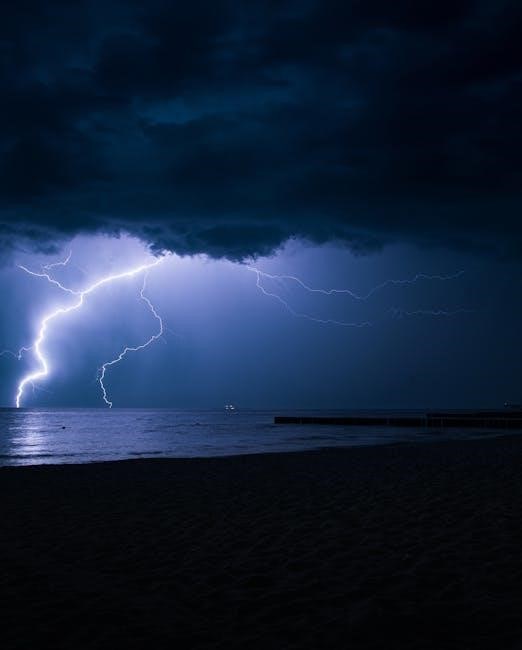
Troubleshooting Common Issues
Identify error codes, check power supply, and ensure proper installation. Verify water flow and temperature settings. Inspect for leaks or blockages. Consult manual for specific solutions.
Diagnosing Error Codes and Lights
Refer to the manual for error code definitions. Check LED lights for flashing patterns indicating issues like overheat or flow sensor problems. Common codes include E1 (temperature fault) or E2 (flow sensor issue). Restart the unit if instructed. Ensure all electrical connections are secure. Consult the troubleshooting chart for specific solutions. If unresolved, contact a certified technician. Always follow safety guidelines when diagnosing or repairing the heater.
Resolving Common Operation Problems
Common issues include inconsistent water temperature or unit malfunction. Start by restarting the heater and ensuring all electrical connections are secure. Check for error codes and refer to the manual for troubleshooting steps. Low flow rates may require adjusting the temperature setting. If problems persist, verify proper installation and consult the troubleshooting guide. For complex issues, contact a certified technician to avoid further complications. Regular maintenance, like cleaning filters, can prevent many operational problems. Always follow safety guidelines during repairs or adjustments.
Resetting the Heater
To reset the Rheem electric tankless water heater, first ensure the power is turned off at the circuit breaker. Wait for 10-15 seconds, then restore power. This process often resolves minor issues like error codes or unexpected shutdowns. If the problem persists, check for proper electrical connections and ensure the unit is vented correctly. For complex issues, consult the troubleshooting section or contact a licensed technician. Always follow safety guidelines to prevent electrical shock or damage to the heater.
Related Posts

taylor indoor/outdoor thermometer manual 1502
Download the Taylor indoor/outdoor thermometer 1502 manual for easy setup and accurate temperature readings. Get the most out of your device with our comprehensive guide.
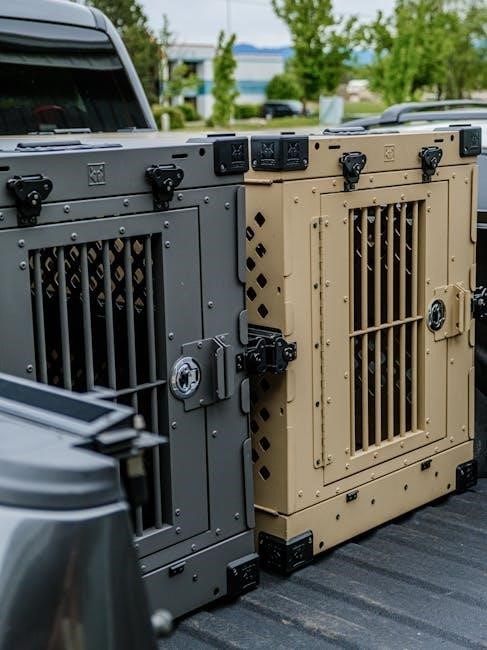
2014 ford f 150 owners manual
Get the free 2014 Ford F-150 owner’s manual. Comprehensive guide with maintenance tips, features, and repair info. Download now!

xnx universal transmitter user manual
Get the XNX Universal Transmitter User Manual for setup, operation, and troubleshooting. Download the comprehensive guide now!